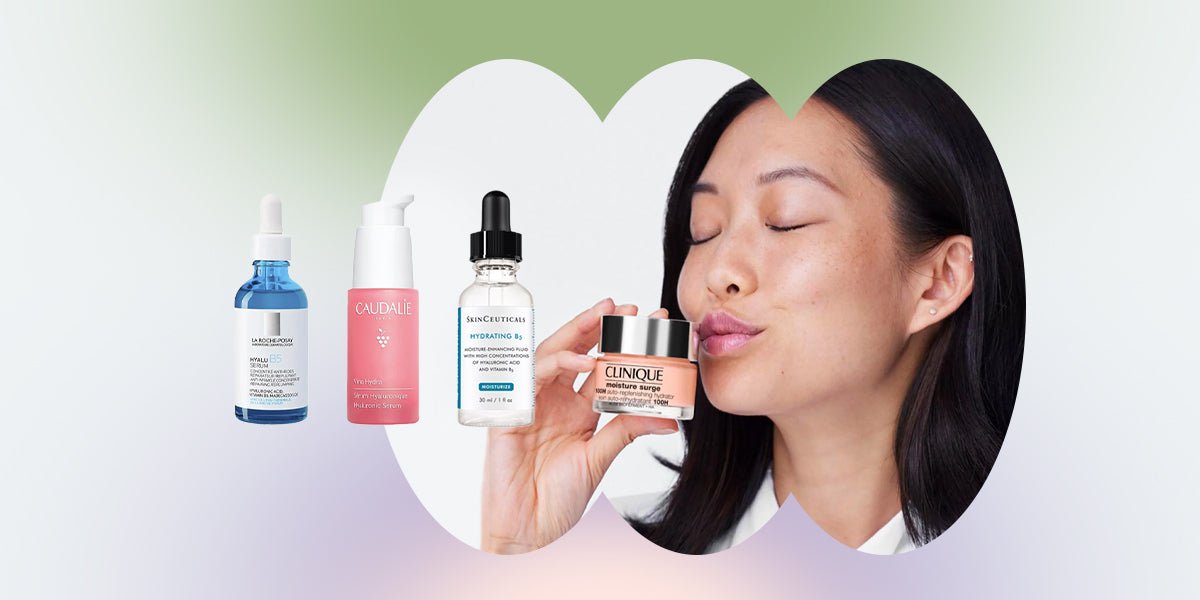
Hydration Hacks Every Skin Type Needs for an All-Day Glow
|
|
Time to read 4 min
|
|
Time to read 4 min
Ever looked in the mirror midday only to find your skin looking dull, tired, or tight? No matter your skin type, dry, oily, or combination, hydration is the secret behind a radiant, healthy-looking complexion. Proper hydration isn’t just about applying moisturizer; it’s about understanding what your skin needs and building the right routine to lock in moisture throughout the day.
Your skin barrier—made up of lipids, ceramides, and proteins—acts as a defense layer. Without enough moisture, it weakens, allowing water loss and environmental irritants to enter. Hydrated skin not only looks fresh but also performs better, heals faster, and feels more comfortable.
Hot water may feel relaxing, but it strips your skin of essential oils. Switch to lukewarm water and limit showers to 10 minutes or less. Use a mild, hydrating cleanser that won’t disturb your skin’s natural moisture barrier.
Hydration isn’t a one-step process—it’s about layering. Start with lightweight, water-based products like essences or toners, followed by serums and moisturizers. Applying products from thinnest to thickest texture helps seal in each layer for maximum moisture retention.
Humectants draw water into your skin from the air or deeper layers. The most effective ones include:
Ingredient |
What It Does |
|---|---|
Hyaluronic Acid |
Attracts and binds up to 1000x its weight in water |
Glycerin |
Softens skin and boosts hydration |
Beta-Glucan |
Calms irritation while deeply moisturizing |
Aloe Vera |
Soothes and hydrates with natural antioxidants |
Humectants are ideal for maintaining hydration levels throughout the day.
Occlusives form a protective layer to trap moisture. If your skin feels tight even after moisturizing, you might be missing this step. Look for ingredients like squalane, shea butter, or dimethicone in your moisturizer. They prevent water loss and give skin that smooth, bouncy texture.
Your skin’s appearance reflects your internal hydration. Aim to drink at least 8 glasses of water daily and include hydrating foods like cucumbers, watermelon, and oranges in your diet. Herbal teas are also a great alternative for staying hydrated.
Indoor heating or air conditioning can dry out the air, pulling moisture from your skin. A humidifier helps maintain optimal humidity levels, preventing dehydration while you sleep or work indoors.
Facial mists are perfect pick-me-ups for mid-day dryness. Choose one infused with rose water, green tea, or hyaluronic acid. Avoid mists with alcohol, which can dry out your skin. Lightly spritz your face whenever it feels parched for an instant refresh.
Nighttime is when your skin repairs itself, so take advantage of it. Apply a richer cream or overnight sleeping mask to restore hydration lost during the day. Look for ingredients like ceramides, panthenol, and peptides that strengthen your barrier while you sleep.
| Skin Type | Hydration Strategy |
|---|---|
| Dry Skin | Layer hydrating toner, serum, and rich cream; avoid foaming cleansers |
| Oily Skin | Use lightweight gel moisturizers and hydrating serums; avoid alcohol-based toners |
| Combination Skin | Apply richer products to dry areas and lighter ones on oily zones |
| Sensitive Skin | Choose fragrance-free, soothing formulas with panthenol and centella asiatica |
| Mistake | Effect on Skin |
|---|---|
| Over-exfoliating | Weakens the skin barrier and increases water loss |
| Using harsh cleansers | Strips essential oils and leads to dryness |
| Skipping moisturizer | Prevents proper moisture retention |
| Ignoring SPF | UV damage accelerates dehydration and aging |
| Symptom | What It Means |
|---|---|
| Dullness | Surface dehydration |
| Tightness | Barrier weakness |
| Excess oil | Overcompensation for water loss |
| Fine lines | Early sign of dehydration |
To keep your glow all day, apply moisturizer while your skin is slightly damp—this helps seal in water. Avoid long, hot showers and harsh exfoliants, and always wear sunscreen. Consistency is key; your skin’s moisture balance improves with regular care, not quick fixes.
Hydration is the foundation of healthy, radiant skin. Whether your skin is oily, dry, or sensitive, maintaining proper moisture levels keeps it resilient, balanced, and glowing. By choosing the right ingredients, building layers of hydration, and staying consistent, you can achieve that all-day glow effortlessly.
